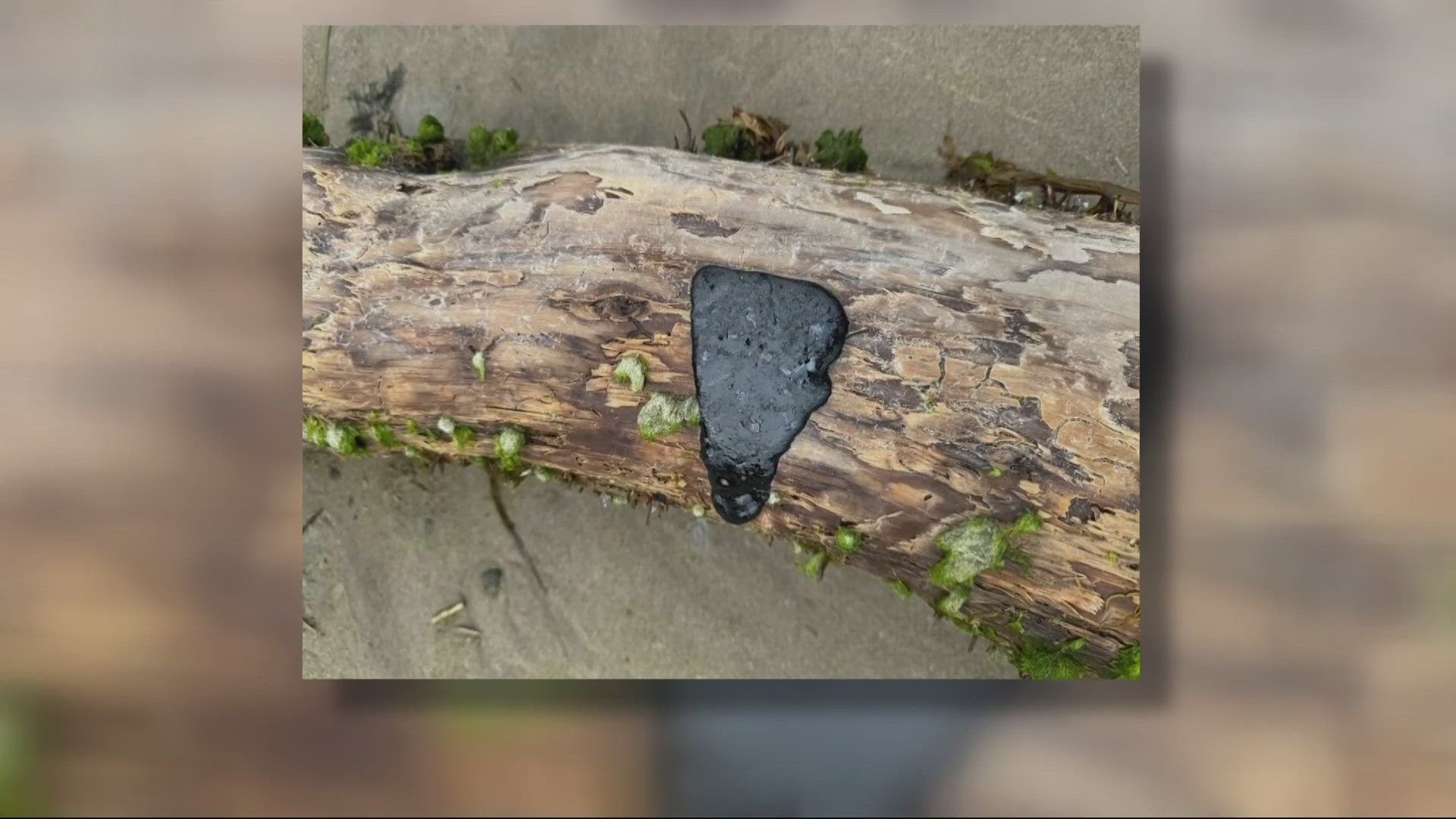PORTLAND, Ore. — Hundreds of pieces of tar, some the size of sand dollars, were found on beaches along the Oregon Coast. This comes after reports of multiple birds covered in a tar-like substance mysteriously showing up in coastal beaches in Oregon and southern Washington.
Kevin Chan, emergency response coordinator for the Oregon Department of Environmental Quality, said the source of the tar, and even what they consist of, was unclear.
“Right now, it is an unknown source," he said. “This is a slightly gooey texture that may be petroleum related.”
Officials with the Oregon Department of Environmental Quality said tar has been spotted at Cannon Beach and Lincoln City, as well as in southern Washington. Tar patties or balls are often remnants of an oil spill or produced from natural seeps. They are formed when winds and waves stretch, then break oil patches into smaller pieces, according to the National Oceanic and Atmospheric Administration (NOAA).
Earlier this week, Washington and Oregon state agencies received reports of at least 10 oiled birds, some of them dead. The birds were found between Long Beach, Washington and Lincoln City.


Four of the birds, all common murres, have been taken to the Wildlife Center of the North Coast, where Jolene Magee works as a rehabilitation technician. Two of the birds have died, but they're hoping to save the remaining two.
“The main thing we’re seeing (is) all of our birds are coming in emaciated," she said. "They’re preening so they’re consuming the oil that’s on their feathers.”
Magee said they were working to nurse the birds back to health before they could undergo the stressful process of cleaning the oil.
“It's kind of a balancing act between getting them to feel better but acting quickly enough to where they’re not consuming too much of the oil,” she said.
Multiple federal agencies, such as the U.S. Coast Guard and the U.S. Fish and Wildlife Service, along with the Oregon Department of Environmental Quality, the Oregon Parks and Recreation Department and the Oregon Department of Fish and Wildlife (ODFW) are responding.
As part of the investigation, several Washington and Oregon state agencies are conducting flights, beach surveys and shoreline assessments to find evidence of oil or oiled wildfire.
Chan said samples of the tar balls have been sent to a lab for analysis and some images have shown evidence of an oil sheen off of Cannon Beach.
“The latest thing we’ve seen right now is a sheen that’s about 1.5 miles in length near Haystack Rock,” he said.
So far, a source has yet to be identified.
People are advised not to touch any tar or oily product found or attempt to assist affected wildlife along the shores. Instead, they should report any findings to 1-800-222-4737. Untrained handling of affected wildlife could be dangerous to the animal or people attempting to help, the news release said.
Download the KGW News app: Download for iPhone here | Download for Android here
Stream newscasts for free on KGW+ on Roku, Amazon Fire and Apple TV: How to add app to your device here
See a typo in this article? Email web@kgw.com for corrections.

